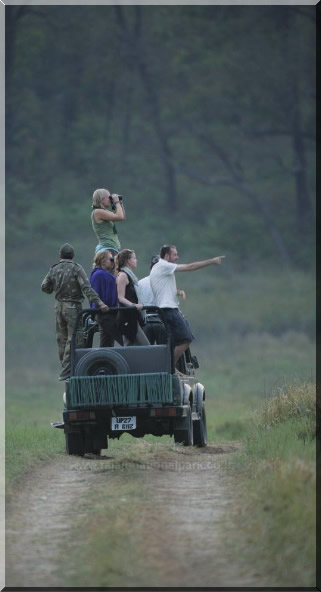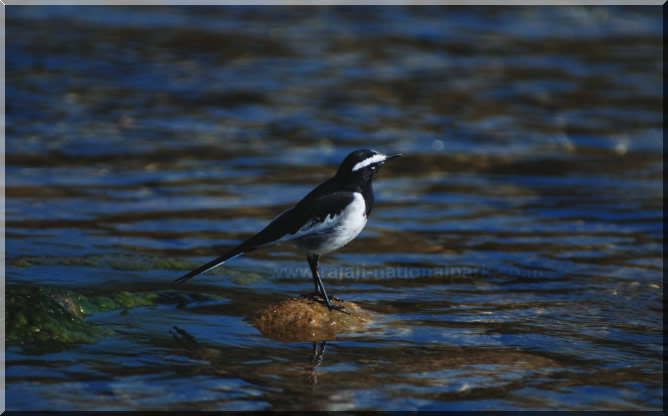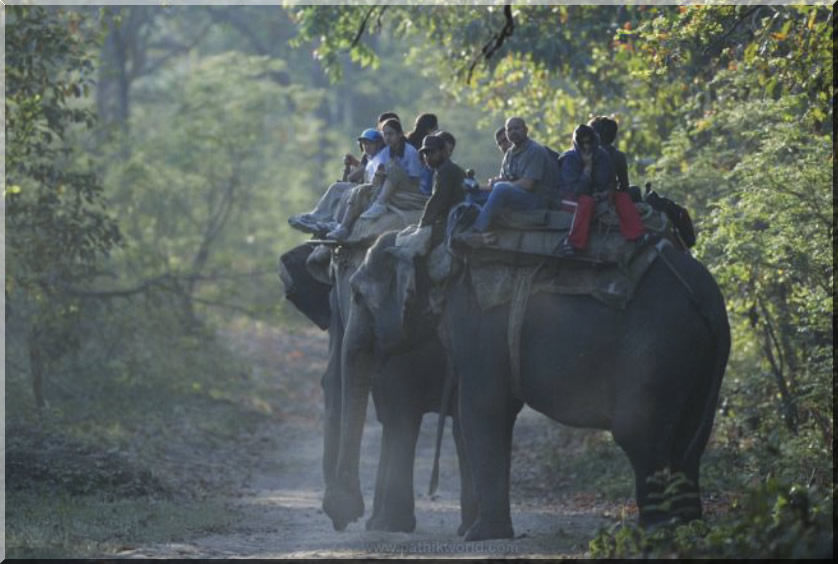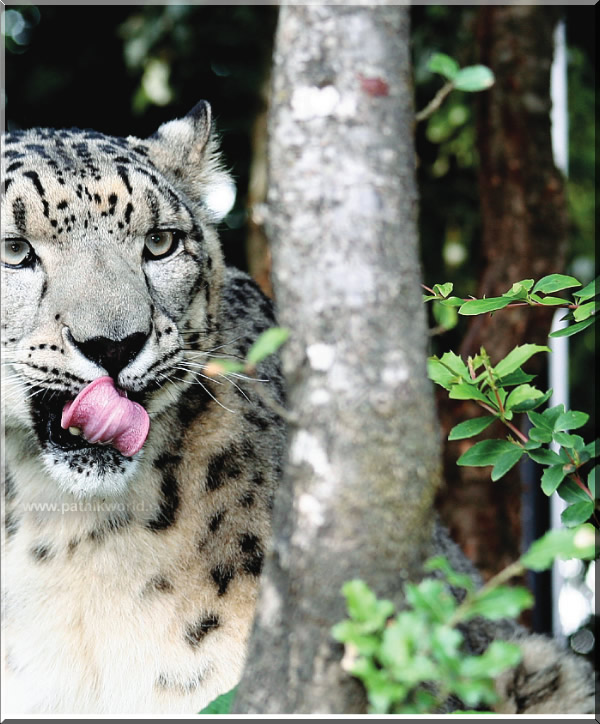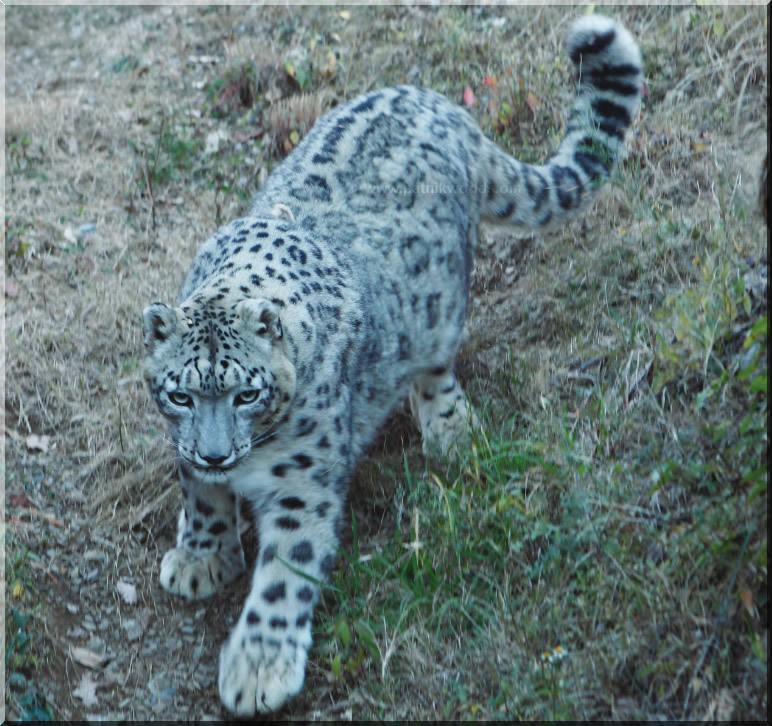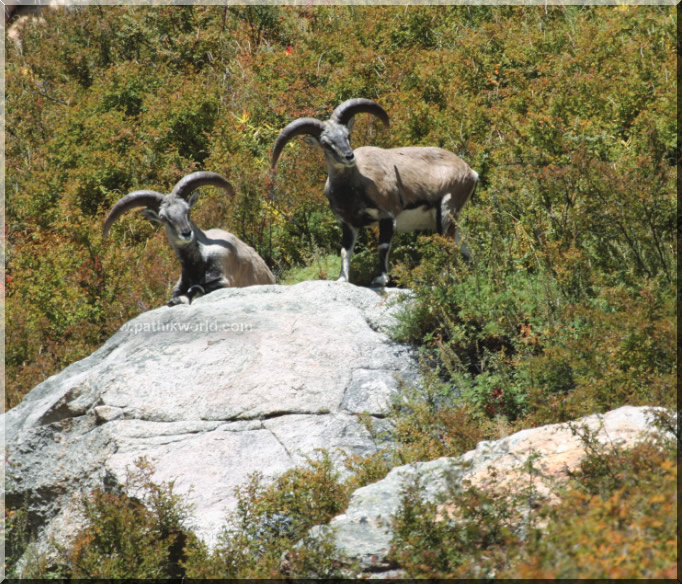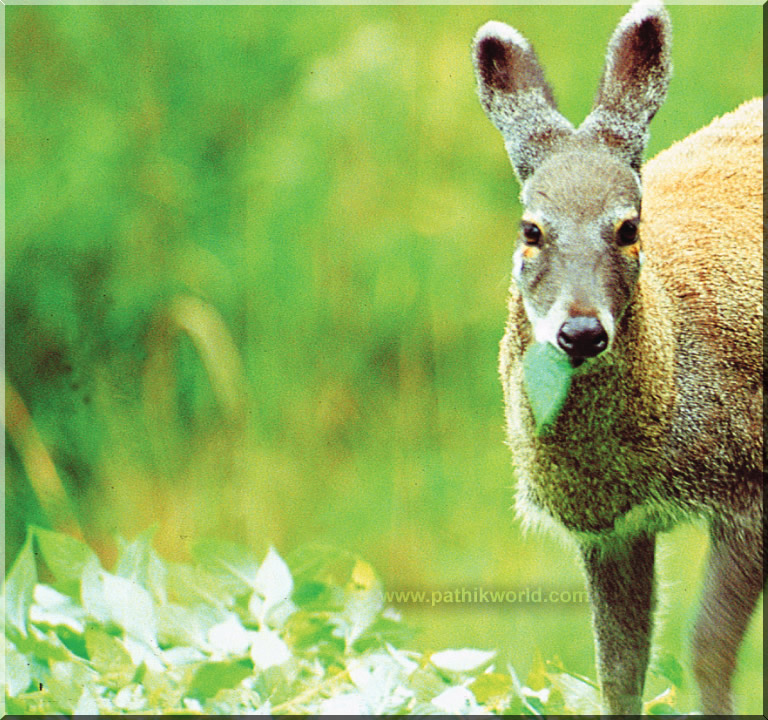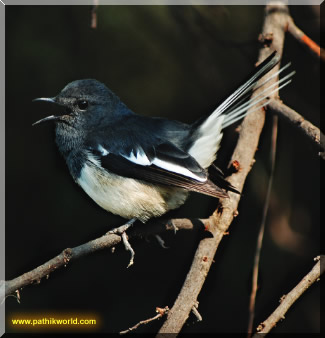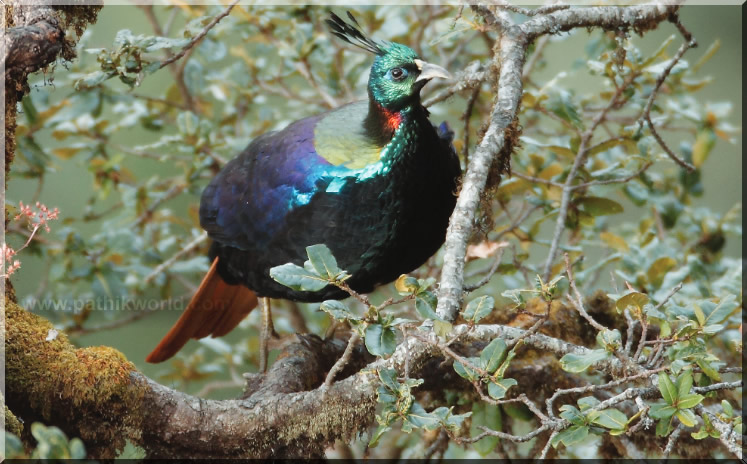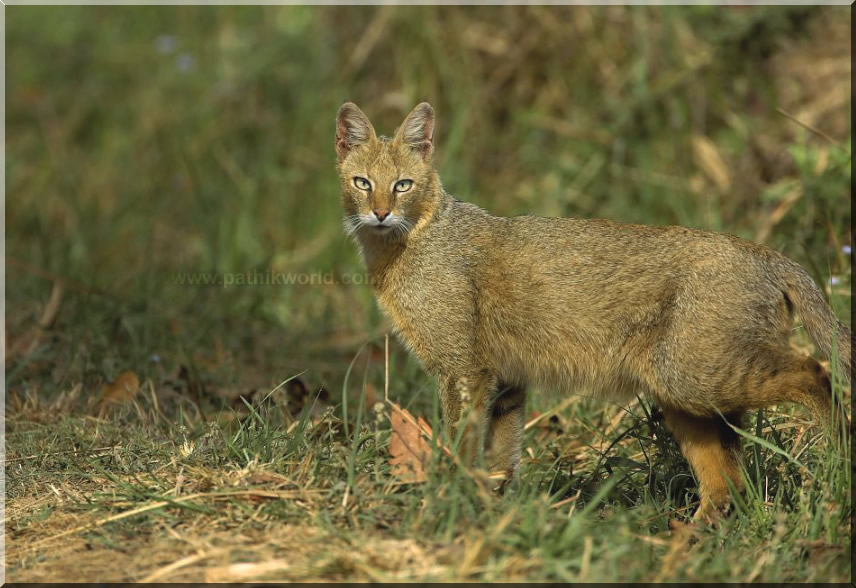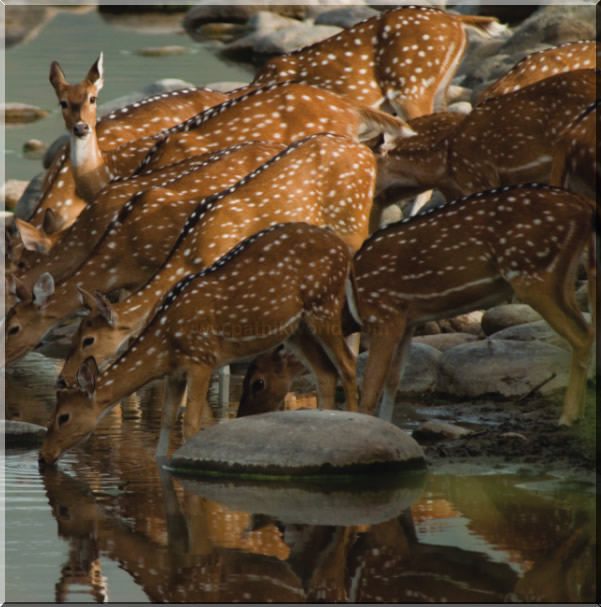Wild Life Eco Tourism of Uttarakhand
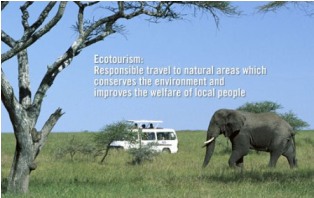
The state has 12 National Parks and Wildlife Sanctuaries which covers 13.8 percent of the total area of the state. The various Parks and Sanctuaries are locating at different altitudes varying from 800 mts to the high altitude Protected Areas at 5400 mts. Apart from these there are two Conservation Reserves- The Asan Barrage and Jhilmil Tal conservation Reserves, two World Heritage sites of the Nanda Devi Biosphere reserve and Valley of Flowers National Park. The state can boast of the first national park of the Indian Sub-continent-the Corbett National Park, with its major attractions being tiger, elephant and leopard. It also supports a wide variety of birds sharing its boundary with the Rajaji National Park. The high altitude National Park includes the Nandadevi National Park and the Valley of Flowers National Park which are regarded as unique creation of nature. They have become popular with trekkers and mountaineers. Almost 300 species of wild flowers bloom here and attracts nature lovers, botanists, ecologists, zoologists, ornithologists and trekkers. Other National Parks and Sanctuaries include Binog W ildlifie Sanctuary near Mussoorie, Govind Pashu Vihar and National Park, Askot wildlife Sanctuary, Kedarnath Wildlife Sanctuary,Sonanadi Wildlife Sa nctuary, Binsar WLS near almora,Gangotri National Park.
Role of Eco-Tourism
Ecotourism is highly suited to tourism development in unspoilt locations as it can create jobs and income without destroying or degrading the natural or cultural assets that the visitor has come to see. Like no other industry, ecotourism gives natural unspoilt areas an economic value, but this goes hand in hand with actively creating benefits for nature conservation and focusing on reducing environmental impacts. Ecotourism experiences also tend to be at the cutting edge of creativity in the tourism industry, and can be readily marketed to the ever increasing numbers of people who wish to ensure that their holiday creates positive benefits, both for the environment and the local communities visited.
Eco Tourism of Rajaji National Park

On the map it is located between Haridwar and Dehradun and Chillawali. Three sancturies in the Uttarakhand Shivaliks - Rajaji, Motichur
and Chila were amalgamated into a large protected area and named Rajaji National Park in the year 1983 after the famous freedom fighter Late Sri C.
Rajgopalachari; popularly known as "Rajaji".
It possesses as many as 23 species of mammals and 315 bird species. The abundance of nature's bounties heaped in and ar
ound this park, attracts a large number of wildlife conversationalists, nature lovers to visit this most
breathtaking wilderness area. The uniqueness of the Parks stands in that it is the northern most limits of the Tiger, Asian elephants, King Cobra and certain bird species.

Eco Tourism of Corbett National Park
The first wildlife reserve of India, Corbett National Park was established in 1936, as the Hailey National Park. Later it changed toRamganga and finally
Corbett National Park in the honor of legendary hunter-turned-conservationist, best known for hunting man-eating tigers and leopards in The Kumaon and lower Garhwal .
Corbett National Park is known for its varied wildlife, and as the site for the launching of Project Tiger. Corbett National Park was one of the nine tiger
reserves created at the launch of the Project Tiger in 1973. The area of the Corbett National Park is 520.84 sq. km. In 1991, an area of 797.72 sq km was added as buffer area of
the Corbett Tiger Reserve. Wildlife found in the Corbett National Park include the tiger, elephant, chital, sambar, nilgai, gharial, King
Cobra, wild boar, hedgehog, common musk shrew, flying fox, Indian Pangolin, and nearly 600 species of birds. A variety of facilities are available to
house tourists within and outside the park.

Nanda Devi National Parks & Wildlife Sanctuaries
Nanda Devi National Park offers an unparallel experience. The Nanda Devi National Park (NDNP) is one of the
very few wilderness area in India that has remained naturally protected. The Nanda Devi basin was declared as
Nanda Devi Sanctuary in 1939. An area of 630 sq. Km. was added as Nanda Devi National Park in the year 1982 which
is now a part and core zone of Nanda Devi Biosphere Reserve. The Park became a world heritage site in the year 1988. Some of the important peaks encircling the National Park are Dunagiri (7066mt), Changband (6864mt), Kalnka (6931mt) Rishi pahar(6992 mt)
Mangraon (6765mt), Nanda Khat (6631 mt), Maiktoli (6803 mt), Mrigthuni (6655mt), Trishul-1 (7120mt), Trishul-II (6319mt), Bethartoli
Himal (6352mt) and Nandadevi East (7434 mt.)
Nanda Devi National Park is an outstanding mountain wilderness with few if any parallels elsewhere in the Himalayas on
account of its concentration of high peaks and glaciers lying within a range of near - pristine habitats. It lies
within a bio geographical transition zone between the Western and Eastern Himalayas and supports a variety of
threatened and uncommon species of large mammals.
The Nanda Devi National Park the world heritage site has unique topography, climate, and soil and it supports diverse habitat, species,
communities and ecosystems. The area is reputed as one of the most spectacular wilderness in the Himalaya and is dominated
by "Nanda Devi Peak" which is a natural monument and India's second highest peak. Trek for the park negotiates a
steep assent at high altitude zones within 13km route from 2000 mt. at village Lata to 4250mt.to Dharasi -
the topmost point. Get a thorough medical check up done before taking this arduous trek.

The Valley of Flowers National Park
The Valley of Flowers National Park is the second core zone of the Nanda Devi Biosphere Reserve.
The credit for the discovery of the Valley of Flowers goes to the British mountaineers
Franks S. Smythe and R.L.Holdsworth who incidentally reached this valley after a successful expedition
of Mount Kamet in 1931. Fascinated by its beauty and grandeur Frank S. Smythe revisited this area
in 1937 and published a book named "Valley of Flowers" (1938). However, there is no doubt that
Frank s. Smythe's writing made this valley world famous. The valley of flowers lies in the main
valley of Alaknanda and Laxman Ganga in the Garhwal Himalayas in Chamoli district of Uttarakhand.
#Pushpawati #river flows through this valley which has it's source in the Tipra Glacier which extends
upto Ghori Parbat Peak. It is a flat valley 5km. long and 2km. wide. Its altitudinal range varies
from 3200 to 6675m.
The Park is surrounded by Gauri Parbat (6590m) and Rataban (6126m) in the east, Kunthal (4430m) in the west,
in the west, Saptsring (5030m) in the south and Nilgiri Parvat (6479m) in the north.
Valley of flowers is a trek of about 16km from Govindghat which is 25km from Joshimath.
From Govindghat one has to trek of 13km to reach Ghangaria. After crossing the Alaknanda river at Govindghat,
an ascending bridle path along Bhyundar Ganga leads to Ghangharia. From here the valley is situated at a
distance of 3km.
Almost 300 species of wild flowers bloom here in natural way. Wherein some of the species are Anemone,
Geranium, March marigold. Primula, Potentilla, Geum. Asters Lilium, Himalayam Blue poppy, Aconitum,
Delphinium, Ranunculus, Rhododendrons and numerous other. Most of the flowers have medicinal values too.
The abundance of Asmanda fern in this valley is a rare sight than in other Himalayan valleys. Apart from
the flowers some species of Butterfly, Musk deer. Blue sheep (Bharal), Himalayan birds & Snow leopard are
also found in the park. One fully equipped interpretation centre at Ghangaria is available. At this interpretation centre regular slide shows
on Valley of Flowers and wildlife is held in the evening hours through out the season.

Gangotri National Park
The Park is situated in Uttarkashi District over a vast area of 2390.02sq.km. . Gangotri, after
which the park is named, is one of the four dhamas(pilgrim sites) of Uttarakhand. The park located within
the upper catchment area of the Bhagirathi river offers a panoramic view of several waterfalls.
It also forms a vital link in the green corridor that extends between the Govind National Park and
Kedarnath Wildlife Sanctuary. It provides majestic beauty of coniferous forests and grandeur of
glacial world combined with lush green meadows. The forests are Himalayan moist temperate type.
Vegetation consists of chirpine deodar, fir, spruce, oak and rhododendrons. The fauna includes snow leopard, brown bear, black bear, Himalayan thar, serow, musk deer, cheer pheasants,
partridges, monal, Himalayan snow cock etc.

Kedarnath Musk Deer Sanctuary
The Kedarnath Musk Deer Sanctuary is the most blissful chime of Nature's bounty and magnanimity.
It is spread over an area of 97517.80ha. (25293.70ha. in Chamoli district, and 72224.10ha.
in Rudraprayag district.) And was established in the year 1972. Named after the famous shrine
of God Kedarnath, located just outside the Sanctuary, it sprawls across the districts of Chamoli &
Rudraprayag in the state of Uttarakhand.The pristine forests and bugyals, in their captivating
wilderness, along with their keenly preserved and managed rich floral and faunal biodiversity
transcend one to a different world of truly idyllic existence. The call of the wild is mesmerizing
and captures Garhwal in its true spirit.
The globally dwindling population of the endangered Himalayan Musk Deer(Moschus Chrysogaster) is
the cynosure, the flagship species of the sanctuary. It was formed with a primary goal of conserving
the globally significant and endangered Himalayan musk deer. However, the rich mixed forests and
beautiful terrain of the Garhwal Himalayas, coupled with the presence of the famous Kedarnath temple,
has made the area just as famous for its biodiversity and cultural heritage.
The sanctuary has some of the richest mixed forests of the Western Himalayas.
Sub-tropical, temperate, sub-alpine and alpine forests are all found on the slopes of
the innumerable mountains and valleys of the sanctuary, stretching across altitudes from 1160m to
7068m above sea level.
There are as many as 23 mammal species in the Sanctuary, 11 of which are threatened. The high number
of endange red animals, including the Snow leopard, Himalayan musk deer, Himalayan thar, Serow,
Himalayan black bears, Himalayan brown bears, and Pheasants, make the Kedarnath Sanctuary an
area of immense significance. Over 230 species of birds are found in the sanctuary. A Musk Deer
Breeding Centre was established in 1982, at Kanchulakharak with in the sanctuary, where Musk deer
are bred in captivity and then released into the wild.
The surrounding areas of the sanctuary are popularly called Kedar Khand, and are home to the temples
of Triyginarayan, Guptkashi, Ukhimath, Kalimath, and Gopeshwar. Access to the temples and the Sanctuary is
possible through the Rudraprayag-Gaurikund road, which passes through the western sector, and
the Chamoli-Kund road that runs approximately along the south-western boundary of the sanctuary from
Mandal to Tala

Govind Wildlife Sanctuary & National Park
The Park is spread over an area of 472sq.km. and sanctuary in 485.89sq km. in Uttarkashi District.
The forest of the park consists of Chirpine, scrubtropical Euphorbia scrub and oak species.
In the Eighth Five-year plan, the Government of India set up the "Snow Leopard Project"
to ensure the long-term conservation of the elusive and endangered Snow Leopard. In 1990,
a team of experts chose the Govind Wildlife Sanctuary as one of the implementation sites of the project
and, subsequently, 472 sq. km within the upper reaches of the sanctuary (the Snow leopard's preferred
habitat) were notified as the Govind National Park. It lies between Longitude: 78.05š E and
Latitude: 31.00 to 31.25šN.
The wild life species found in the park are snow leopard, leopard cat, the brown and the black Himalayan bear,
fishing cat, musk deer, serow, thar, goral, sambar, wild boar, etc. The birds found are monal, snow pigeon,
green pigeon. The best period for visiting the best park is from May to October. Accomadation is available
in Forest Rest Houses.
The altitude within the park ranges from 1400m to 6323m above sea level and magnificent, jaggered snow-capped
peaks mesmerize all visitors. Within the park, the emerald greenery of the Har-ki-dun valley is a paradise for
trekkers, while the Ruinsiyara high a ltitude lake is popular amongst nature lovers. Tourists also frequent the
Har-ki-dun Forest Rest House, known for its location amidst a valley of wild flowers. The forest rest houses of
Naitwar, Taluka and Osla are en-route to Hari-ki-dun and are worthy attractions in their own right.
Nearest town from the park is Dhar kadhi 17km from the Park. The nearest airport is Dehradun at a
distance of 190 km. The rail head is also Dehradun

Askot Wildlife Sanctuary
Askot sanctuary is situated in Pithoragrah district of state Utarankhand surrounded by the mountain
and forest is often called a "Miniature Kashmir" due to its stunning beauty and the presence of
several high Himalayan peaks.The sanctuary is a house of many wild animals such leopard, deer, beers,
kakars and a great variety of birds. Lying in the lap of Kumaon Himalayas ata height of 5412 ft.,
the sanctuary is visited by many Indian and foreign scientists for the research projects.
The Askot Wildlife Sanctuary is a 600 sq.km area established primarily for the conservation of
the Himalayan Musk deer in the Himalayan moist temperate zone. It is thus characterized by
sub-alpine forest, alpine moist pastures and alpine moist scrub. Three species of Oak and
Conifers such as Chirpine, Blue Pine Deodar, Fir and Spruce are found in the sanctuary.
The forests are fed by the Gauri Ganga and Dhauli Ganga rivers, both of which drain into the Kali Nadi.
The area is populated by the Himalayan thar, Himalayan water shrew, Assamese macaque Stone / beach
martin, Himalayan musk deer, Leopard, Leopard cat, Serow, Himalayan bear, and the Fulvous fruit Bat.
Also found here are the endangered Snow leopard and the Goral with the Bengal fox and the Red fox,
both of which are threatened species.

Binog Wildlife Sanctuary
The Binog Widlife Sanctuary lies on the outer most ridge of the Himalayas, 2150m to 2800m above
sea level in Mussoorie. Set up in 1993, Known as much for the Kempty falls as for its widlife,
the sanctuary lies within the catchments of the Aglar River, a tributary of the Yamuna.
The sanctuary was set up primarily with the objective of protecting the area's dwindling bird
population and diversity, especially the Himalayan pheasant and the Monal
(the state bird of Uttarakhand) which are becoming rare. The white crested Kaleej Pheasant,
Snow partridge, Bush quail, Blue rock pigeon, Fire tailed sun bird, and the Whistling
thrush are some of the other birds found here, and the now extinct Mountain Quail was last sighted
in the Binog forests back in 1986. The sanctuary also has a vast floral diversity, consisting of
mosses, ferns, flowers, and orchids. The mountainsides are covered with a dense forest of Banj
and Oak interspersed with Deodar and Kail patches. Under the Banj, a light undergrowth of shrubs
and grasses cover the forest floor. Leopards, lagurs, Ghoral, Kakar, Lepoard cat, Flying Squirrel etc.
are found here.
A trek to find the source of the Kempty falls takes you through the dense forests of the area, and
is well worth the effort. Several cliffs and the undulating terrain make the area ideal
for trekking, though the slippery surfaces makes winter trekking hazardous. For the culturally curious
adventurous, there is an observatory set up by George Everest on the periphery, as well as an old
temple of Jwala Mata which hosts an annual fair in the month of November.

Binsar Wildlife Sanctuary
Binsar is a beautiful, quite and wild Himalayan destination with rich natural surroundings among dense
forest. Binsar is perched on top of the Jhandi Dhar hills. This place is situated 30 km north of the
Almora town in theUttarakhand. Binsar was the ancient summer capital of the Chand Kings who ruled in the
7th and 8th centuries AD. This area is a small Wildlife Sanctuary for the conservation and protection of
the broad leaf oak(Quercus) forests. Binsar Wildlife Sanctuary was established in 1988. From Binsar one
can see the panoramic view of the Himalayan peaks like Kedarnath Peak, Shivling, Trisul a nd majestic
Nanda Devi from a place called 'Zero Point'. Binsar Wildlife Sanctuary inhabits 200 bird species.
Binsar Wildlife Sanctuary is spread over 45.59kmē and situated at an altitudevarying 900 to 2500 metres
with an average height of 2412 mts. Binsar is rich in its flora and fauna.
Fauna
These includes Leopard (Panthera Pardus), Nemorhaedus goral (goral),Chital (Axis axis) Musk deer ,
Serow (Capricornis sumatiensis) , Jungle Cat(Felis chaus), Sus scrofa, Black Bear, red fox, pine
marten,Fox (Vulpesvulpes), Langur (Presbytis entellus), monkey (Macaca mulatta) ,Porcupine, amongst
others. It has been declared an Important Bird Area by BirdLife International with over 200 species
including Tits, Forktail, Nuthatches,Blackbirds, Flying Squirrel (Petaurista petaurista),Parakeets,
Laughingthrush, Magpies, Kalij Pheasant (Lophura leucomelana), Eagles,Monal, Koklas , Barking Deer
(Muntiacus muntjak), Woodpeckers and arange of others. Binsar is also home to many reptiles and
innumerable invertebrates including a wide range of Butterflies.
The place has Pine forest at the lower level and Oak and Rhododendron at the higher altitude.
This place is abundant in alpine flora, Bryophytes,Pteridophytes, hanging mosses and many
other species of wild flowers. Other main plants of this sanctuary are Kaphal (Myrica esculenta) ,
Pinusroxburghii, Engelhardtia spiicata, Macaranga pustulata, Quercus gloca, Quercus incana, Quercus
leucotricophora(Banjh), Quercus semicarpifolia, Quercus dilatata, Cedrus deodara, Alnusnapalensis,
Aesculus indica, Pinuswallichiana , Quercus lanuginosa and Quercus floribunda, etc.

Sonanadi Wildlife Sanctuary
The Sonanadi Wildlife Sanctuary, home to the migratory Asiatic Elephant, was established in 1987 in
the Kotdwar tehsil within Pauri Garhwal district. It covers an area of 301.76 sq. km. at the north end
of the Ramganga river.
In the rainy season, the sanctuary is the favorite haunt of the Asiatic Elephant, who migrates along a corridor
connecting the Sharda and Yamuna rivers. The creation of the Sonanadi Sanctuary helps safeguard this corridor
by creating a protected area between the Corbett National Park and the Rajaji National Park, a link that
is now threatened by the Kalagarh Dam. The construction of the dam has submerged 82 sq. km. of forest land
separating the Corbett National Park and the Sonanadi Sanctuary, significantly obstructing the movement
of elephants.
Wildlife in the Sanctuary includes tigers, leopards, sambars, cheetal, gorals, kakars, bears, magars,
ghariyals, otters, pythons and the King Cobra. The area's healthy tiger population has also led to
its inclusion in the Corbett Tiger Reserve. Additionally, there are about 550 species and sub-species
of bird life in this sanctuary. The Pied hornbill, Palash Fishing eagle, Hawk eagle, Black necked stork,
Kaleej pheasant, and the collared falconets are just a few examples of the local avifaunal diversity.
The sanctuary's forests are full of Sal, Shisam, Khair, Asna trees and Bamboo. In the buffer zone of the
sanctuary - from Marchula to Doumunda- 'angling' is permitted with a permit issued by the forest
department. The fresh water fish, Mahasheer, is found in abundance here.

Conservation Reserve
Asan Conservation reserve
Asan Barrage located at the confluence of River Yamuna and Asan near Dhalipur village is nearby.
The 444.40ha of area has been declared as a Wetland Conservation Reserve. It is an ideal habitat
to a large number of migratory and resident birds. During Winters it is not unusual to count as many
as 8000 waterfowl with species diversity. More than 250 bird species including 80 water birds have
been recorded. It is marked by presence of Brahminy ducks, Rudely Shel duck, Dabbling Duck, Diving Duck.
Birds; Herons, Egrets, storks, Ibises, Geese, which can be easily spotted during winter season (Nov to Feb).
View More Info...

Jhilmil Jheel Conservation Reserve
Jhilmil Jheel (Tal) conservation reserve is in 3783.5 ha area in Haridwar forest Division. The swampy
habitat due to the overflow water of river Ganga is an ideal location for swamp deer. In the midst of dense
miscellaneous forest is Rasiabar Forest Rest house with 02 suites and sufficient space for camping tents,
for accommodation and interpretation center cum hall for film show/meetings/workshops.
The habitat is located at the junction of the Bhabar & Teari formations representing a very unique &
species rich eco system which encompasses spectacular landscapes, tall grasslands and tropical moist
deciduous forests. The area is rich in faunal and floral diversity including five species of deer
(Chital, Sambar, Barking deer, Hog deer and Swamp deer), Elephant, Nilgai, Common leopard and occasionally
tiger are also seen in the area. Avifauna includes a large number of resident and winter migratory birds.

VIEW IMAGES of Jhilmi Jheel conservation reserve.

